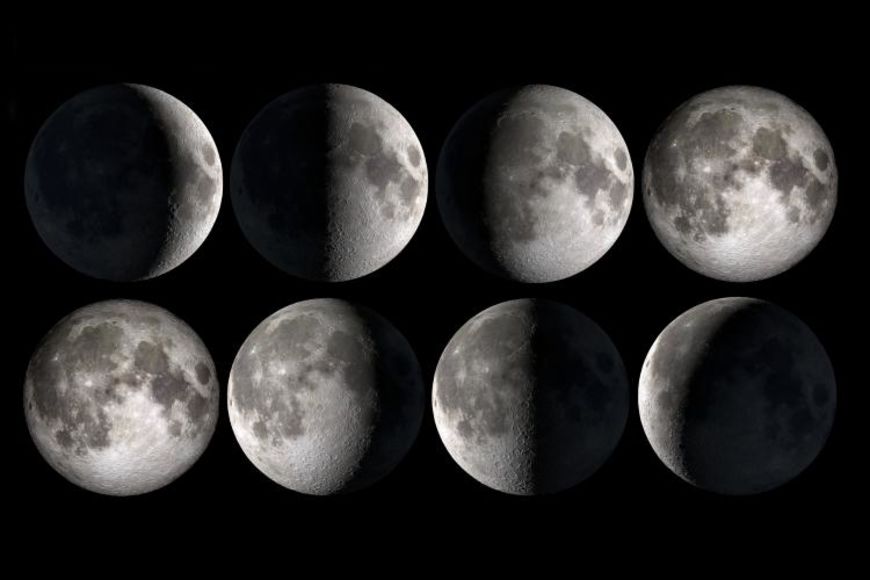

The Islamic calendar, also known as the Hijri calendar, is deeply rooted in the lunar cycle, which profoundly affects the timing of Islamic holidays. Unlike the Gregorian calendar, which is based on the solar year, the Islamic calendar follows the phases of the moon. This key distinction results in Islamic holidays shifting by approximately 10 to 12 days each year. This article, prepared by yantar.ae, examines how the lunar year affects major Islamic holidays and the significance of this unique calendar system.
The Islamic calendar is a lunar calendar consisting of 12 months, each based on the moon’s cycle. Each month begins when a new crescent moon is sighted, which typically lasts about 29 or 30 days. Because the lunar year is around 10 to 12 days shorter than the solar year, Islamic holidays do not fall on the same Gregorian date every year. Instead, they move backward through the seasons over time.
This lunar calendar was adopted by Muslims in 622 CE, marking the year of the Prophet Muhammad’s (PBUH) migration (Hijra) from Mecca to Medina. Hence, the calendar is also referred to as the Hijri calendar.
One of the most noticeable impacts of the lunar year is the shifting of Islamic holidays across different seasons. As the Islamic calendar is around 354 days long, holidays like Ramadan, Eid al-Fitr, and Eid al-Adha move earlier each year by about 10 to 12 days. This cycle means that over a 33-year period, these holidays will occur during every season, from summer to winter.
Ramadan, the holiest month in Islam, is a time for fasting, prayer, and reflection. Since it follows the lunar calendar, it can occur in any season. Muslims observe a daily fast from dawn until sunset throughout the month. In summer, fasting can be challenging due to long daylight hours and hot temperatures, while in winter, the shorter days make fasting periods relatively easier. This shifting nature of Ramadan across the seasons adds a spiritual dimension, reminding Muslims of the cyclical nature of time and their faith.
Eid al-Fitr, the festival marking the end of Ramadan, also moves with the lunar calendar. This joyous celebration, often characterized by communal prayers, family gatherings, and feasts, can take place in any season. Muslims around the world celebrate this day by sharing food, giving charity (Zakat al-Fitr), and wearing new clothes. The changing timing of Eid al-Fitr reminds Muslims that their spiritual connection to God transcends the earthly seasons.
Eid al-Adha, also known as the “Festival of Sacrifice,” falls in the Islamic month of Dhul-Hijjah, the same month in which the Hajj pilgrimage is performed. Like Eid al-Fitr, the date of Eid al-Adha shifts with the lunar calendar. It commemorates the willingness of Prophet Ibrahim (Abraham) to sacrifice his son as an act of obedience to God. Muslims mark this occasion by sacrificing livestock and distributing meat to those in need. With the lunar year, Eid al-Adha may be celebrated in the sweltering heat or the cooler months, but its essence remains unchanged.
The Islamic lunar calendar carries deep spiritual meaning. The cyclical movement of the moon reflects the cycles of life, time, and worship. The fluctuation of Islamic holidays throughout the seasons is seen as a divine reminder of the fleeting nature of time, encouraging Muslims to stay grounded in their faith, regardless of the worldly calendar.
Moreover, the moon itself has great significance in Islam. In the Quran, the moon is referenced as a sign of God’s creation and a symbol of His divine wisdom. Observing the lunar phases brings Muslims closer to nature and to the rhythm of creation, which is why moon-sighting holds an essential role in marking Islamic months and holidays.
Since Islamic holidays depend on the sighting of the new moon, there are often differences in when these holidays are observed globally. While modern astronomical calculations can predict moon phases with great accuracy, many Muslim communities still adhere to the traditional practice of physically sighting the crescent moon. This can lead to slight variations in the start of holidays like Ramadan and Eid from country to country.
In regions where the new moon is sighted earlier, holidays may begin a day or two before they do in other parts of the world. This diversity in observance highlights the global unity of Muslims while also respecting local practices and traditions.
The lunar year adds a unique and spiritual dimension to the observance of Islamic holidays. As these holidays move through the seasons, Muslims are reminded of the transience of time and the importance of worship in all circumstances. The adaptability of Islamic practices to the lunar calendar allows for a profound connection with nature, faith, and community. Whether fasting during a long summer day or celebrating Eid during a winter evening, the shifting lunar year keeps the Islamic faith dynamic and ever-present in the lives of Muslims worldwide.
Q: Why do Islamic holidays move every year?
A: Islamic holidays move each year because the Islamic calendar is based on the lunar cycle, which is about 10 to 12 days shorter than the solar year.
Q: How does the lunar calendar affect Ramadan?
A: Ramadan shifts earlier by about 10 days each year, meaning it can be observed in any season, affecting the length of fasting hours depending on the time of year.
Q: What is the significance of moon sighting in Islam?
A: Moon sighting is crucial for determining the beginning of Islamic months and holidays, reflecting the importance of the moon in Islamic tradition and the Quran.